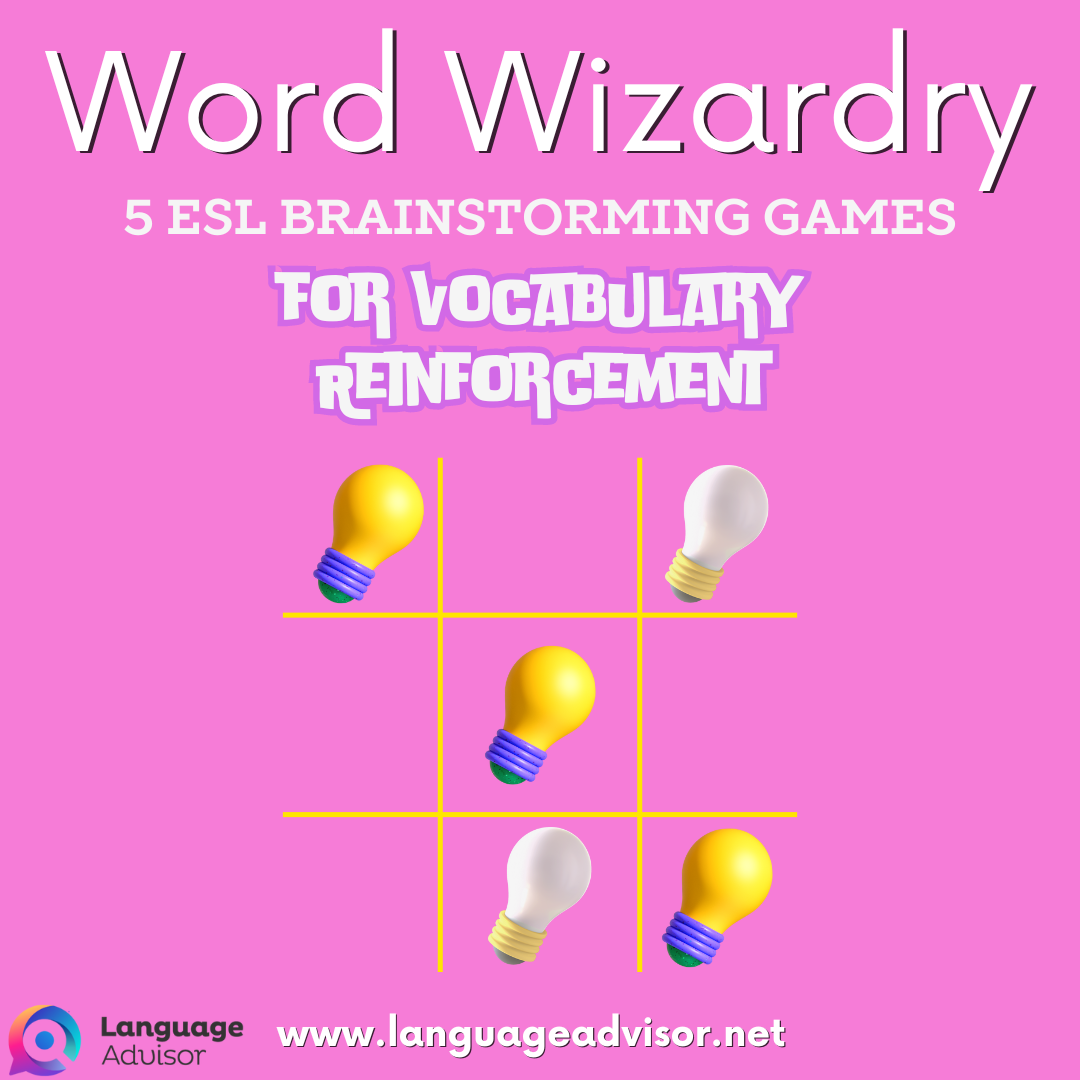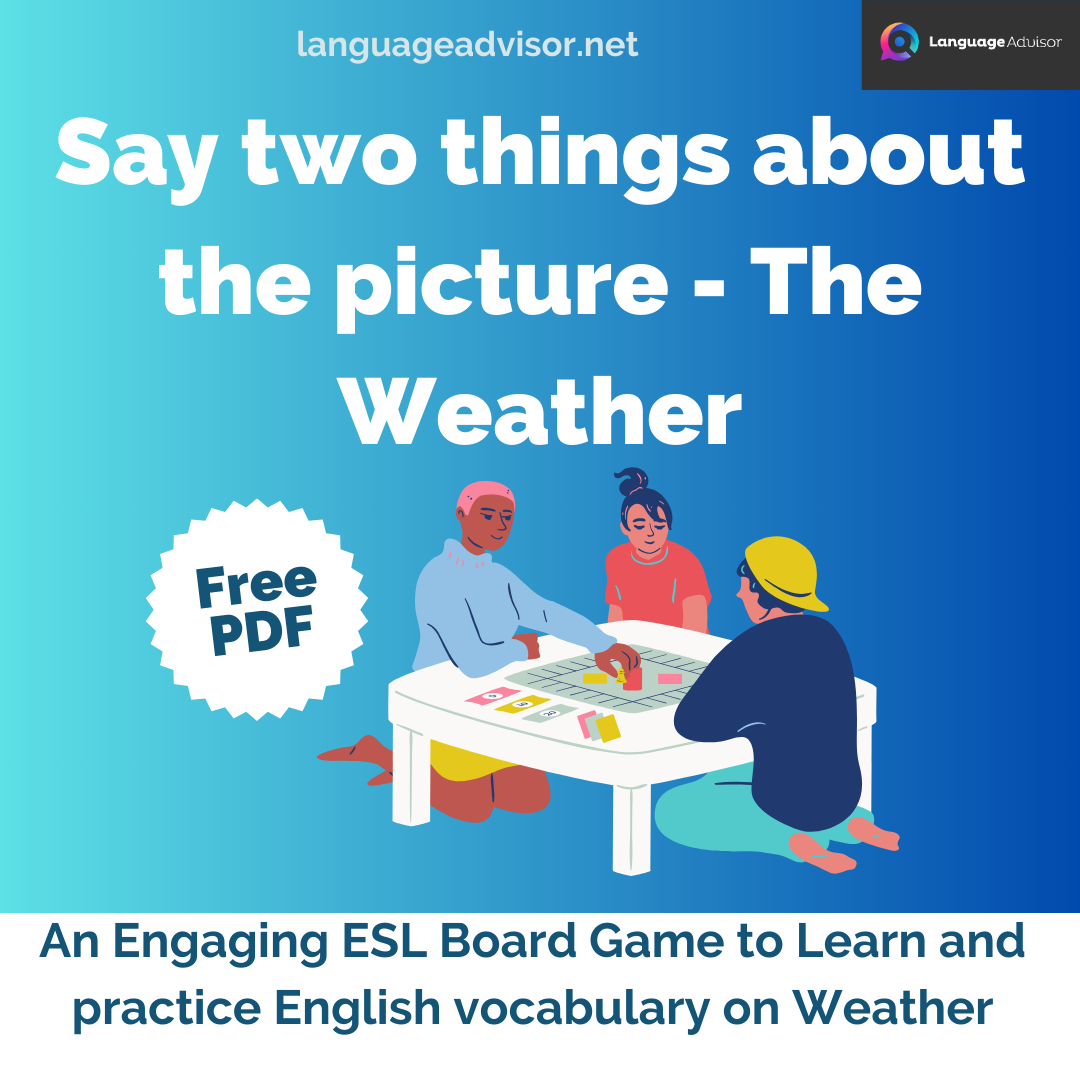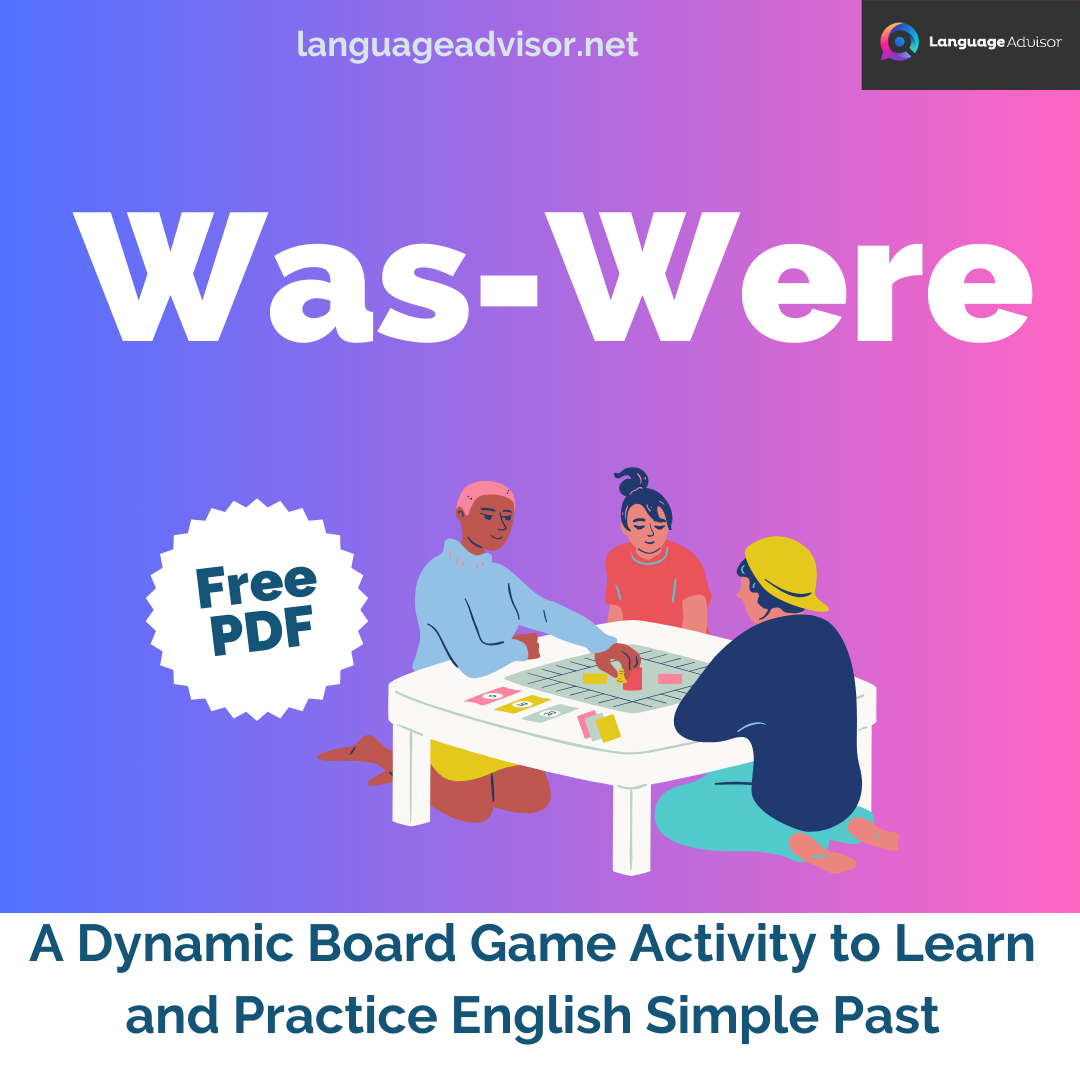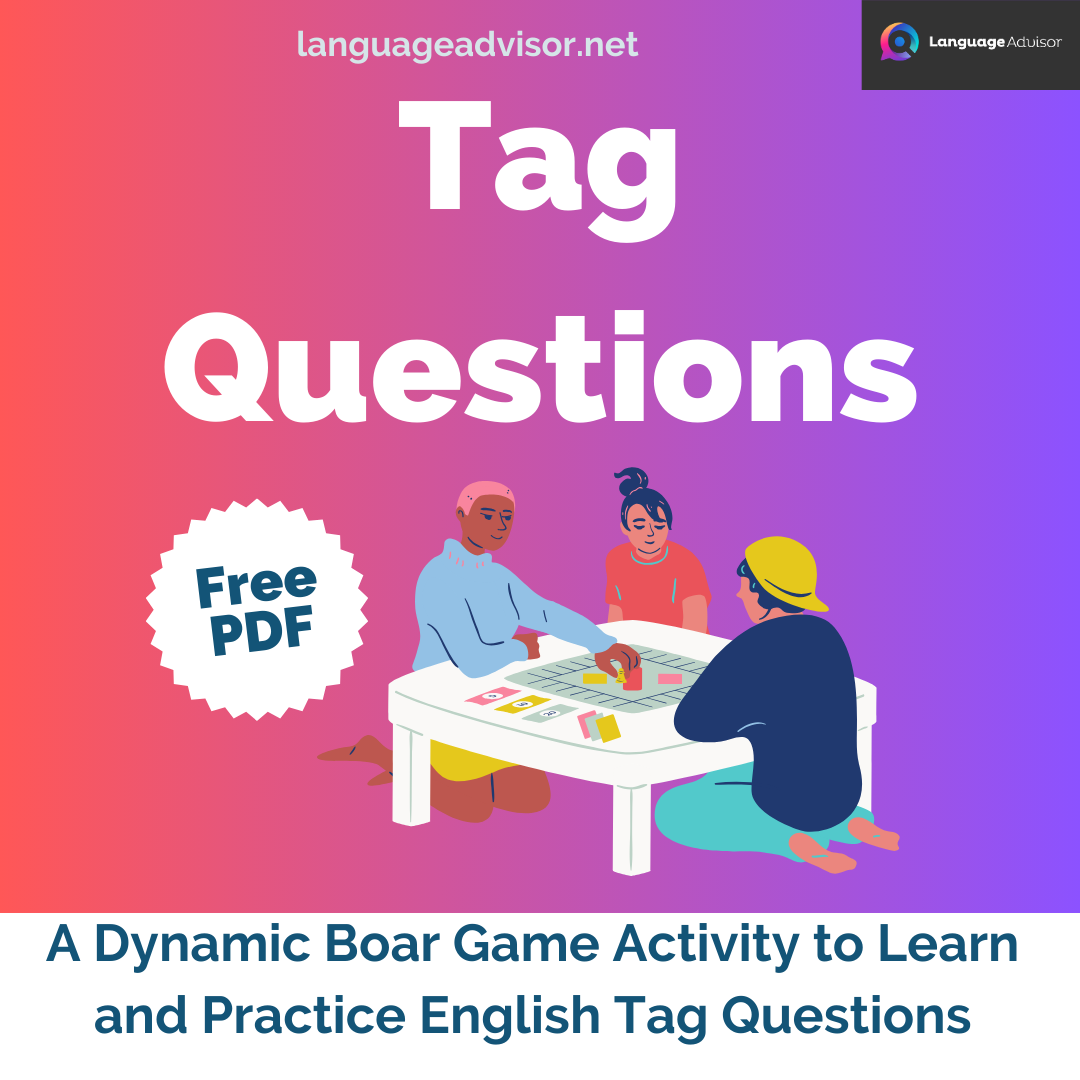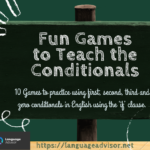Fun Grammar Games for Adults. Effective English-learning tools to teach grammar with fun.
Fun Grammar Games for Adults
Fun Grammar Games for Adults
Fun Grammar Games for Adults. Effective English-learning tools to teach grammar with fun.
When you are teaching ESL to adults, introducing games into your classroom will lead to some serious benefits.
It is often the case that adult language learners have far more responsibilities than just attending your English class. Many adult learners also work and have families.
The livelier and more fun you can make your class, the more likely you are to have engaged and receptive students. This is especially true if they are coming to your class at the end of the day or on their day off from work.
Grammar games promote a more relaxed environment for using newly acquired grammar skills, add color to otherwise black and white grammar concepts
Learning a new language should be enjoyable and by using games, you can transform grammar lessons from stale to stimulating!
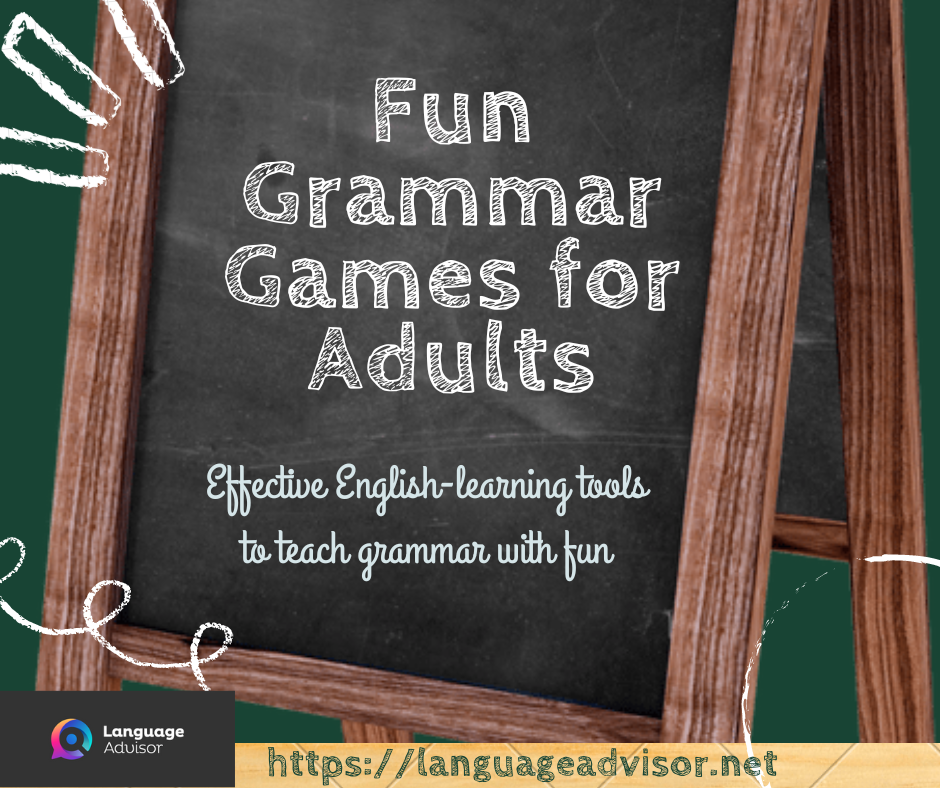
The greater part of the world’s troubles are due to questions of grammar
~
Michel de Montaigne

Fun Grammar Games for Adults
Effective English-learning tools to teach grammar with fun. These activities can all be adapted and used at different points of your lesson.
Here are some grammar games to practice ALL TENSES


3-PART SENTENCES
This game is a great way to get your students involved in practicing their grammar both out loud and on paper.
You need three boxes (box tops, hats, or bins will work). The first should be labelled Tense, the second labelled Pronouns and the last labelled Positive/Negative. In Tense – have future, past, present, conditional on slips of paper. In Pronouns – I, you, he, she, they, we.
In Positive/Negative you will have one with positive and the other with negative. Each student comes up to the front of the classroom and pulls out one slip of paper from each box. The teacher then calls out an infinitive verb and the student must say a sentence for the class using that verb with the Tense, Pronoun and Positive/Negative slips they pulled. (TIP: After each correct sentence is said aloud by a student – you can have all students write it down on a piece of paper to turn in at the end of class. This way, they are practising written and oral grammar.)





Here are some grammar games to practice the PRESENT CONTINUOUS
PRESENT CONTINUOUS NOISES


Students work in pairs or small groups, making different noises with their mouth – the partner or the rest of the group should guess what this person is doing. ‘You are yawning!’ ‘You are kissing your Mom good-bye!’, ‘You’re snoring!’, etc.
The teacher should first demonstrate the activity to make sure the students have had a laugh at you and are not too shy to make funny noises themselves!





PRESENT CONTINUOUS WARM UP
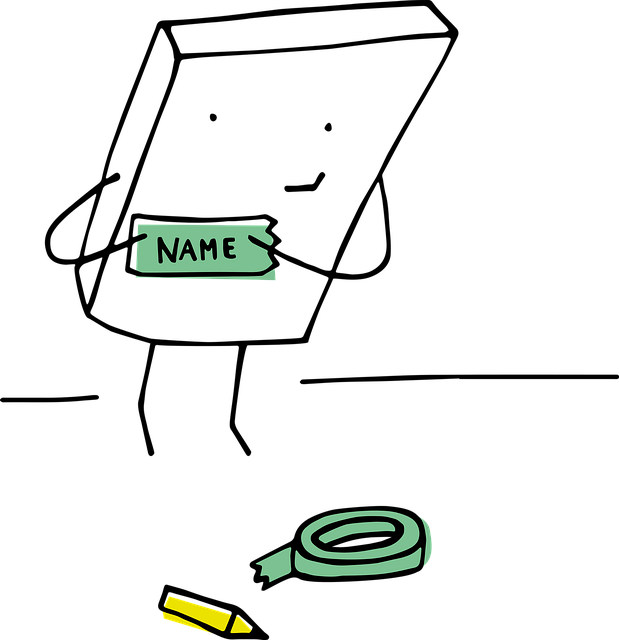

Ask your students to close their eyes and think about a person that its important for them (like their mom, dad, husband, wife, dog, etc), tell them to think about what are they doing right now (for example ‘She is preparing lunch’, ‘he is working’, ‘he is running’, etc).
Make sure the students are using the correct form of Present Continuous, be at hand to correct mistakes or provide help with some vocabulary students may need to make their sentences.





PRESENT CONTINUOUS BRAINSTORMING


Have a little Present Continuous contest competition where your students will compete to write or say as many things as possible in this tense. Each sentence must describe something that is currently happening in the classroom. You can set a time limit of, say, 2 minutes, and see how many sentences each of them can come up with. A variation of this activity can be describing an image (make sure you choose one with a lot of action happening), or describing something they can see out of the window.





PRESENT CONTINUOUS COUNTRIES WARMER


First demonstrate it yourself: secretly choose a country (for example, France) and describe what (most/some/a few) people in that country are probably doing right now: ‘Some people are drinking wine with cheese‘ etc. Provide additional sentences until someone guesses where it is. Then have students work in pairs and have them guess each other’s secret country. You may also want to provide a map with time zones for this activity, or draw one on the board.





Here are some grammar games to practice the PAST TENSES
THE BECAUSE GAME


Use this fun warmer to review ‘because’ and to practice the past tenses.
Begin by telling the class something you did yesterday. eg: I went to the market.
Choose a student and have them repeat what you said, add because, and give an explanation. eg: I went to the market because I needed some spices.
Then have that student choose a classmate, and have her repeat the process. eg: I needed some spices because I was making tacos. And so on.







STORY TIME
The aim of this activity is to revise the past simple tense.
Procedure
Ask your students to choose their favourite part of the story they have read recently, and a part they didn’t like, then write on the board:
I liked it when …
I didn’t like it when …
Ask them to complete these sentences for themselves. When they have finished, they move around the class exchanging their opinions. They make a note of anyone who had the same likes or dislikes.
At the end, compare the results with the class.







NOUGHTS AND CROSSES
This activity offers a fun way to revise the past simple.
Draw a noughts and crosses grid on the board. Write the present tense of a verb in each grid space, for example see, go, meet, have, play, visit, eat, read and do.
Divide the class into two teams: the ‘Noughts’ and the ‘Crosses’. Teams take it in turns to choose a verb from the grid and tell you the past tense form. If they guess correctly they score a point (a nought or a cross for their team on the grid). If they guess incorrectly, the other team scores a point.
The winning team is the first one to score a line ofthree noughts or crosses.





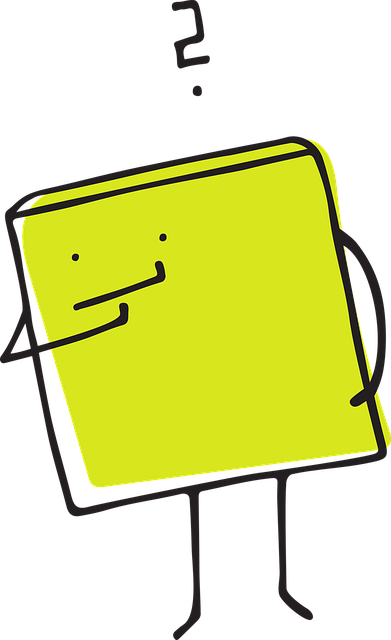

HAVE YOU EVER…?
It’s the same famous game many used to play in childhood.
Give your students small pieces of paper and ask them to write a question with “Have you ever…?” Ask them to make them interesting, but comfortable to answer. Once folded, each student pass the question to the student on the left. And so on. Without unfolding, each student writes Yes or No on that paper. The questions and answers then are read aloud.







ALPHABET ACTIVITY
This activity can be a fun and snappy way to end a lesson.
Create a number of instruction cards along the following lines: the word must be a past tense form, the word mustn’t have more than one syllable, it must be something you can find in a supermarket, the word must be an adjective etc. One student takes a card and reads the instructions. He / She then starts off by saying a word beginning with ‘a’, the next student thinks of one beginning with ‘b’, the next with ‘c’ and so on. Give all students at least one ‘life’ or a word pass to use if they get stuck. After they’ve used up their ‘lives’, start eliminating and stepping up the time allowed to think of a word.





Here are some grammar games to practice the PASSIVE VOICE


PASSIVE VOICE THROUGH TPR (Total Physical Response)
Learning passive voice is necessary because so much of academic writing is composed in the passive form (note the prior clause, for example).
However, students often don’t understand the passive or why sentences should be written “backwards” or in a way they would never say them.
To make the function of passive voice apparent in a very physical way, start by dropping a book on the floor. Ask the students “Tell me about what I did.” They’ll respond “The teacher dropped a book.” Write the active voice sentence on the board then drop the book again. Ask, “Now tell me about the book.” Students will respond “The book was dropped by the teacher”; students may need some help in generating the correct passive form.
You should write the passive voice sentence on the board. The active and passive voice should be compared and discussed in terms of form and meaning. If appropriate, continue the discussion of the passive in different verb tenses. Students can then work in pairs and perform various actions like dropping books, taking out paper, opening pens, and so on, and composing sentences in passive and active.
This is effective because it makes apparent in a very physical and graphic way the meaning and use of the passive voice.





TABLOID TITLES


As a way to introduce the passive voice, as well as some colorful vocabulary, have students write about their class in tabloid titles.
With this activity, students are gaining reading, writing, and speaking practice as well as vocabulary development.
You may start by passing around a few actual tabloids so students become familiar with what they are: “news” that isn’t news but entertainment. Students can then write their own tabloid titles about their class, working in pairs: “Teacher’s purse is stolen! Students are suspected!” “Jose was seen at Starbucks with a strange woman!” More outrageous titles can also be written: “Class is contacted by aliens!”





Here is a grammar game to practice the INDIRECT REPORTED SPEECH


INDIRECT REPORTED SPEECH
Start telling a sentence about yourself. Eg. My name is Richard and I like beer. You can tell what you like, what you do, where you’ve been…
Ask one of your student to report your sentence to the class. Eg. He said that he liked beer.
Then ask your students to do the same in pairs.





Here are some games to practice the ADVERBS and the ADJECTIVES


ADVERBS INTO A STORY
Produce a list of commonly used sentence-modifying adverbs on the board, such as suddenly, actually, unfortunately, and happily.
Then launch into a story, which each student must contribute to, with the rule that everyone must begin the first sentence of his or her contribution with a sentence-modifying adverb.





ADJECTIVES FOR YOUR NAME


Write your name on the board vertically, and add a suitable adjective that begins with each letter of your name. The next step is to invite students to do the same.
ALTERNATIVE ACTIVITY : COLOR ASSOCIATIONS
Write a number of adjectives, such as mysterious, happy, peaceful, sad, angry, and frustrated on the board. Call out a color, and ask your students to tell you which adjective they associate with that color.





Fun Grammar Games for Adults
Here are some grammar games you can find on Language Advisor
Fun Games for teaching phrasal verbs and idioms







